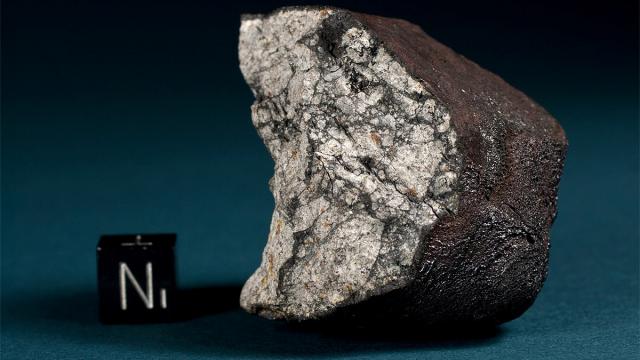On January 16 2018, a bright flash lit up the sky over Michigan, accompanied by a loud boom. Caught on dash cams and home surveillance systems, the meteor briefly turned night to day as it streaked to the ground at almost 57,936km per hour, causing a blast wave equivalent to a minor earthquake.
By the next morning, local people were out searching the frozen winter landscape for pieces of fallen material. Then the professionals had arrived – meteorite hunters.
Meteor in Chelyabinsk, Russia, 2013.
Much as it did when a similar meteor lit up the sky over Chelyabinsk, Russia in 2013, the Michigan fireball caused a minor gold rush to the site, as people hunted for signs of the fresh meteorite.
Originating as asteroids, and in rare cases even fragments ejected from other planets in our solar system, meteorites are pieces of rock and metal that survive the fiery journey through our atmosphere.
Falling into three broad categories – stony, iron or stony-iron – meteorites are complex. Burnished by their descent to Earth, many have a fusion crust; a darker outer layer that can appear unusually smooth and differentiates them from terrestrial rocks. Those with a high iron content can have a unique fluid-like surface appearance. Tiny circular grains called chondrules are found in some meteorites; fragments of the early solar system that never coalesced into planets.
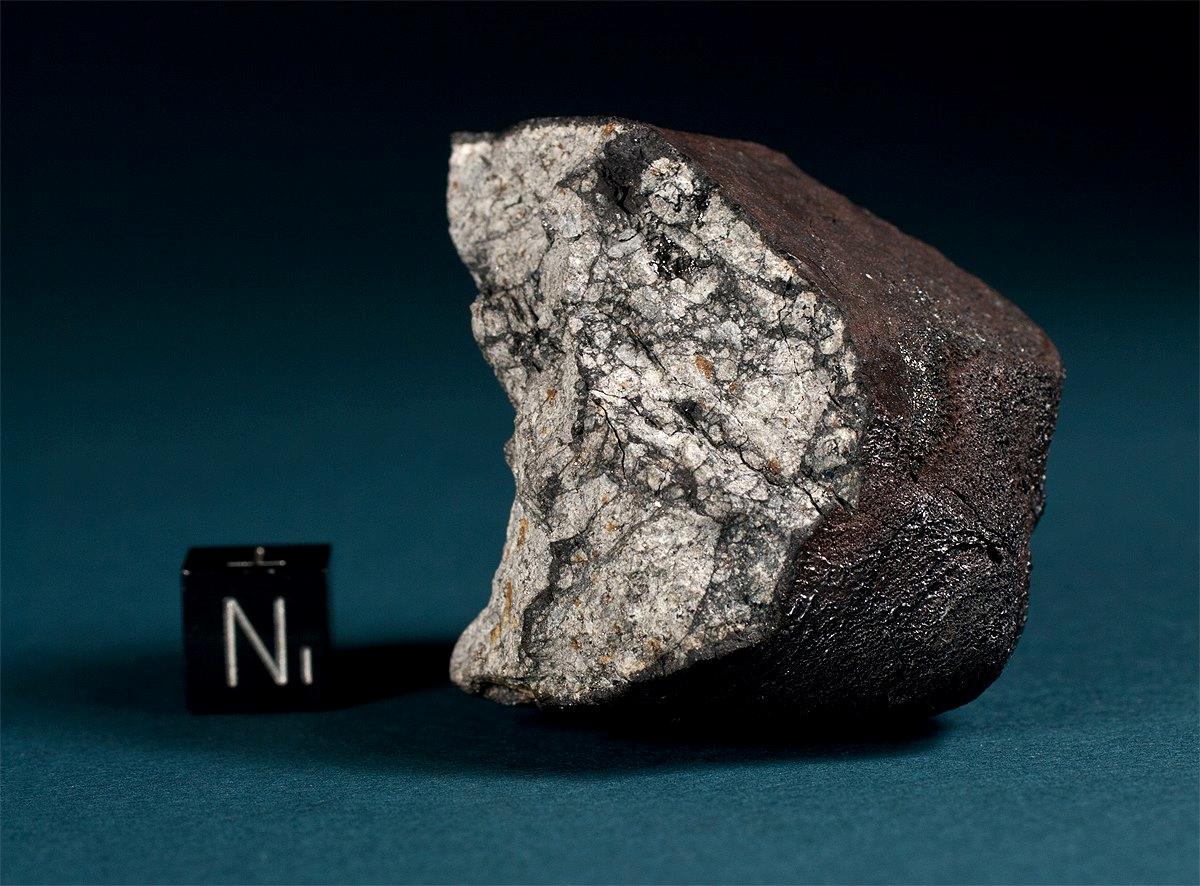
A 112.26g Chelyabinsk meteorite chunk next to a 1 cm cube. The broken fragment displays a thick primary fusion crust with flow lines and a heavily shocked matrix with melt veins and planar fractures. Photo: Svend Buhl / Meteorite Recon
Despite an estimated 100 tons of this material falling to Earth each day from space, much of it arrives as dust. Any larger pieces, even just a few millimetres across, can be worth their weight in gold. Or much more.
Yet meteorites have not always been this valued. While other precious materials like gold and diamonds have been highly prized for millennia, until the late 19th century there were only a handful of accounts of witnessed falls, and scientists were sceptical that rocks could rain from the sky. With its potential for global travel and remote locations, there has recently been a certain Indiana Jones quality attached to the profession of meteorite hunting. One of the world’s most high profile hunters, Michael Farmer has given accounts of being arrested, beaten and almost killed in his quest for specimens in countries around the world.
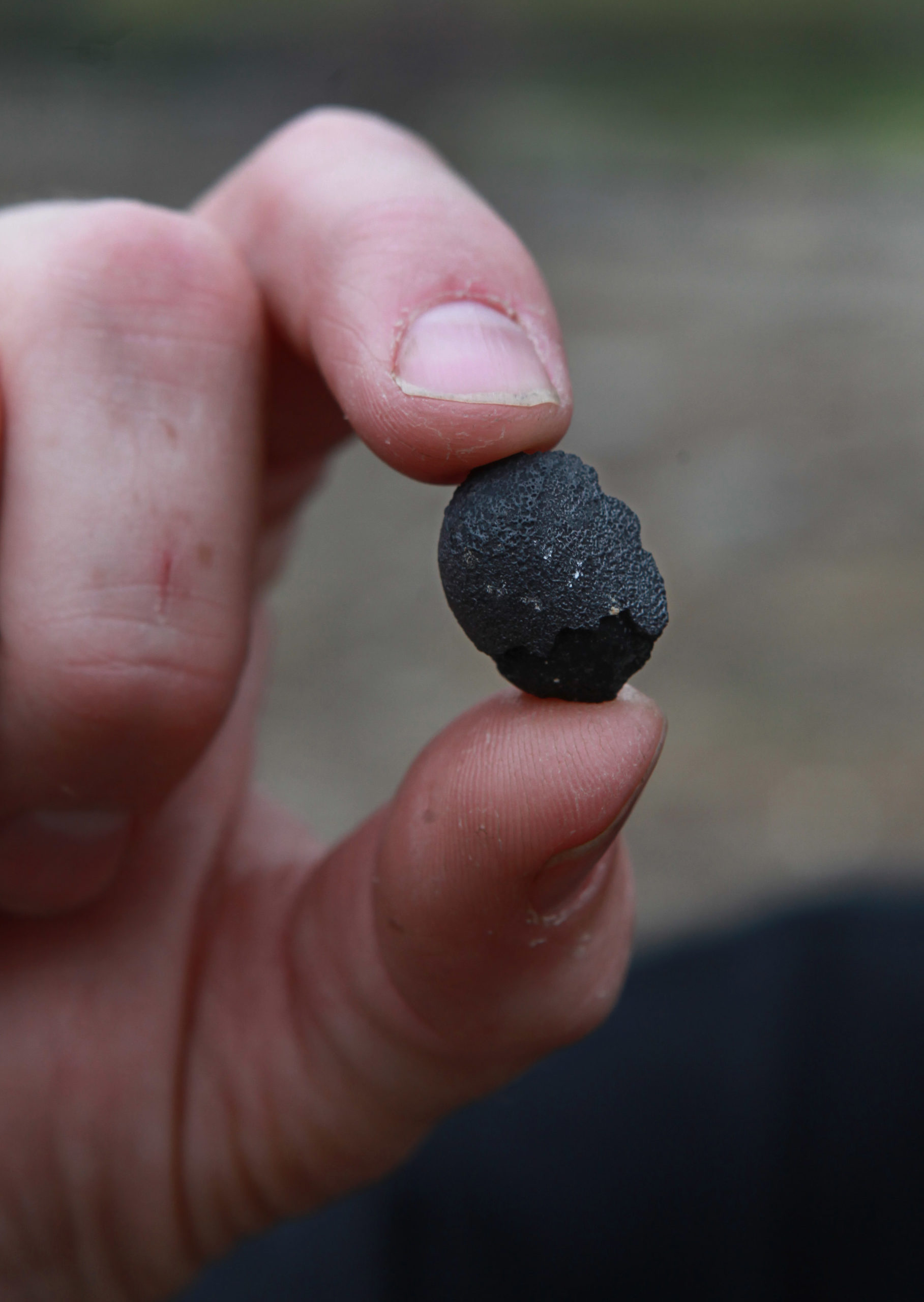
Meteor hunter Robert Ward displays a piece of a meteorite found in Lotus, California believed to between 4 to 5 billion years old.
Photo: AP
But when the British Museum first opened in the 18th century, exhibiting such objects would have been a matter of ridicule. By 1890, it had amassed a significant collection. Now housed in the Natural History Museum, the meteorites had been purchased and donated from all over the world. In a 19th century guide to the museum’s collection, sources are shown to be eclectic, with many meteorites turning up when fields were plowed, and one in what is now the state of Virginia even being used as an anvil. Many of the stones were used by Native American peoples like the Comanchees for years before being removed by white settlers. Some as sources of iron, others as valued objects.
Today, irons like the Sikhote-Alin meteorite, which fell in Russia in 1947, appear for sale the world over, often fashioned into jewellery. With an estimated 70 tons of material surviving that particular impact, the supply is unlikely to dry up anytime soon, and is likely to be encountered by the casual meteorite owner.
But rarer specimens aren’t going to appear on Etsy. Instead, they pass through the hands of a select group of people. In the community of those serious about meteorites, if you aren’t studying them for a living, you are likely to be a hunter, a dealer or a collector. So how much will a meteorite set you back in 2018?
“The vast majority trade in the one to ten dollar per gram range,” collector Paul Swartz told Gizmodo, “[But] I’ve purchased them for less than three cents a gram.”
Swartz began his collection after seeing an iron meteorite for sale on eBay. Having started small, he now owns some pieces of the rarest finds on Earth. A 1911 fall near El Nakhla El Bahariya in Egypt yielded what is known as the Nakhla meteorite, believed to be from Mars. Such a rare class is incredibly valuable — Paul’s piece cost $US3,000 ($3,871) per gram. At the time of writing, gold is a comparatively meagre $US42.18 ($54) per gram.
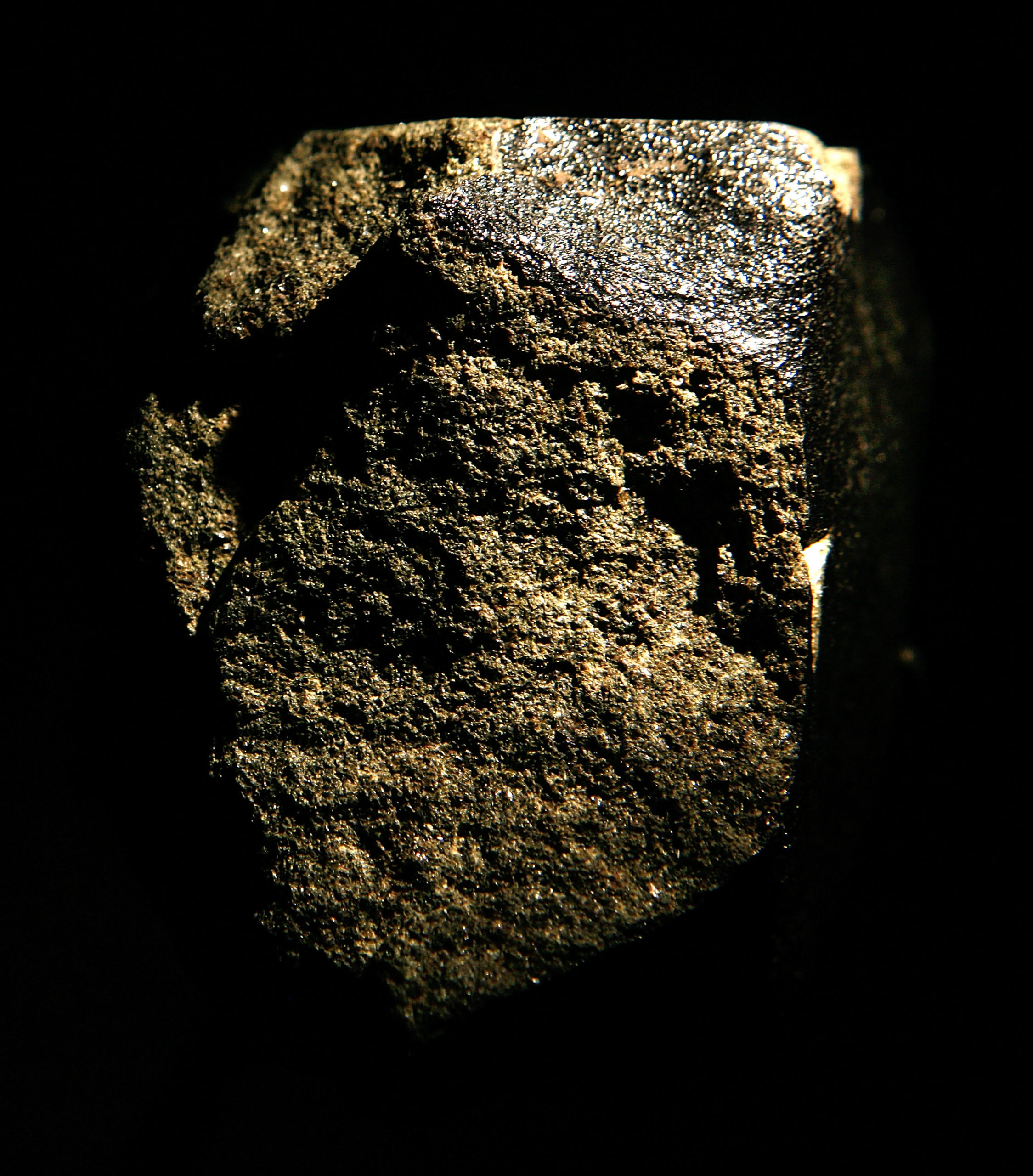
The Nahkla, a rare Martian meteorite, which landed in Egypt in 1911 on display at Natural History Museum’s the Vault in London.Photo: Getty
Once they make their way into the market, most meteorites change hands in online sales — through a dealer’s website, or sometimes via eBay.
But if you’re going to spend thousands of dollars on a lump of rock or metal you likely haven’t set eyes on in person, you definitely want to know its provenance. Each meteorite distributed for purchase is supposed to come with a record of its classification, and its trail of ownership. To obtain this, dealers must have their specimens classified by a geologist and included in the Meteoritical Bulletin — the definitive index for verified meteorites. This requires a donation of 20% or 20 grams (whichever is smaller) of finds to the classifying scientist. With the scientific and market value ultimately closely aligned, such symbiosis makes sense, leaving researchers with a sample to distribute for study and the dealer with enough still to sell.
With a meteorite’s category and potentially its origin in hand, dealers can determine a price, and whether they have been lucky enough to acquire an unusual specimen. But prices do remain, as UK dealer Martin Goff points out, highly variable. People, he explains, may want particular meteorite types for their collections, and scientists might wish to study materials of a certain origin. Then there’s size. Individuals — meteorites that are sold intact as found — are more valuable than slices or broken off fragments.
As a result of the trust necessary in these expensive exchanges, meteorite hunters have always been a fairly tight-knit community. But in recent years the market has opened up, Goff told Gizmodo. Currently a dealer based in England, he now works most frequently with meteorite hunters in countries like Mauritania, Egypt and Libya. Facebook has enabled those who have found fresh falls to reach out directly to dealers, rather than selling them on through an extensive chain of people-who-know-people. With dealers often based in Europe and North America, nomadic peoples tend to be the first link in this chain – making the least money from an object that increases in value as it makes its way to wealthier markets.
Mustapha Oulkouch, who began meteorite hunting as a hobby after quitting hotel work in 2006, sold his first meteorite ten years ago. These days, he said he makes his living looking for meteorites in the Moroccan desert. However it is not, he said, a lot of money, though it does allow him the life he wants. There’s an art to meteorite hunting, and he has learned to recognise the distinctive crust of meteorites on sight, but sometimes he wanders the desert with a metal detector or a magnet searching out rarer iron-rich falls.
Communities of hunters like Oulkouch in and around the Sahara have been finding increasing numbers of specimens in recent years, with a group in Morocco joining forces to form the Moroccan Association for Meteorite Professionals and Amateurs. Its goals are to facilitate collaboration with international dealers and collectors, and to promote meteorite science within Morocco itself. More movements like this might aid the democratization of the meteorite business, and see more of the balance (and money) shift to the countries where finds are being made.
Sharing a fraught legal area with the likes of oil and gold, ownership of a meteorite depends very much on whose land it falls on. Or, in some cases, who can escort it quickly enough from the premises without the relevant authorities noticing. A court case was famously fought over the Williamette meteorite in Oregon, when farmer Ellis Hughes attempted to move it onto his property, after finding it on land belonging to the Oregon Iron and Steel Company. No parties in court represented the Clackamas people, who had originally inhabited the area and to whom the meteorite, called Tomanowos, was important.
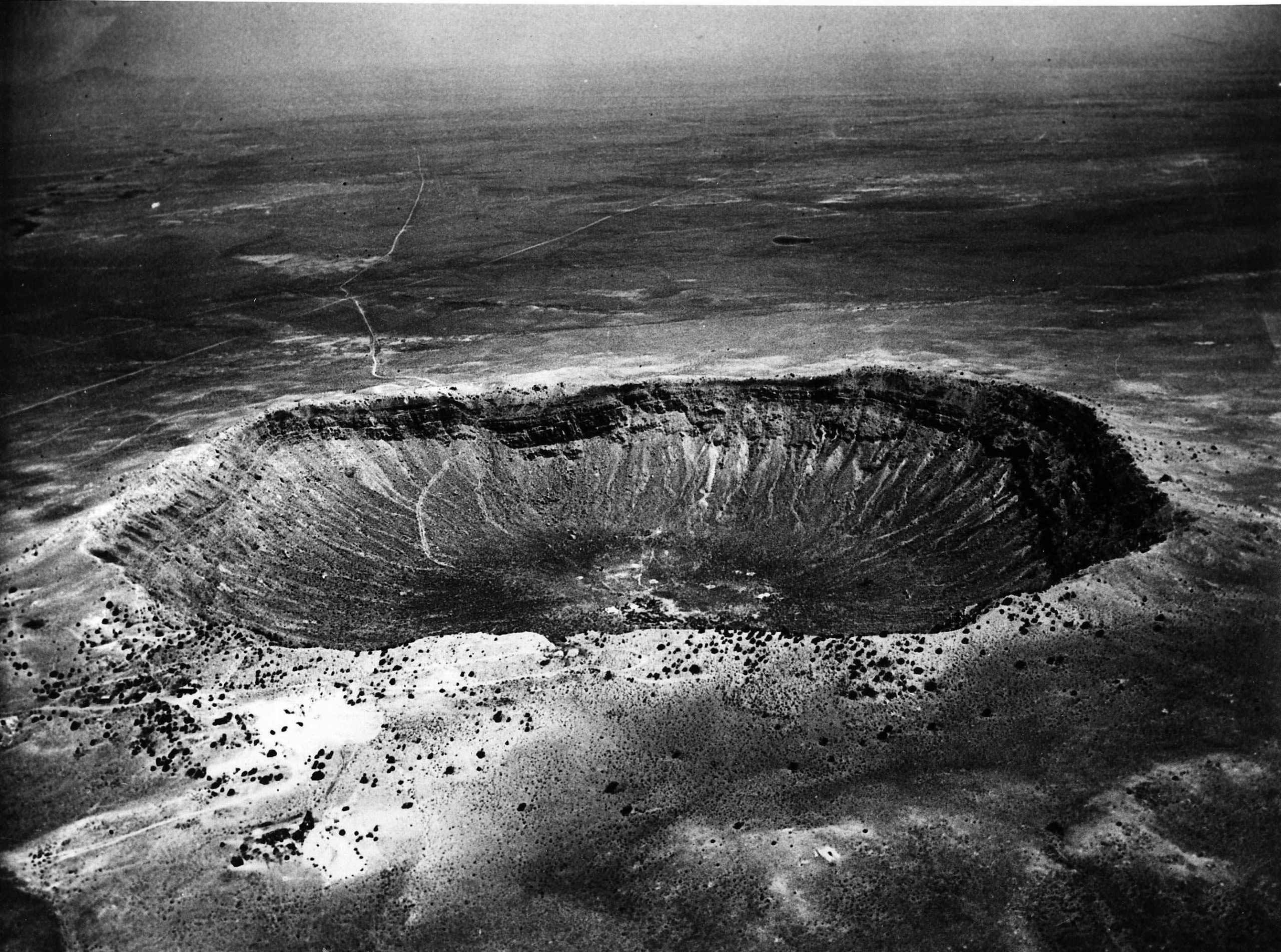
An ancient, 182.88m deep, mile-wide meteor crater near Winslow, Arizona.
Photo: AP
While fireballs like Michigan and Chelyabinsk provide an obvious pointer, and historic falls like Arizona’s Meteor Crater can still yield new finds, the majority of material that reaches Earth is lost simply because it falls unwitnessed into the ocean, or among leaves and vegetation. If a meteorite falls in the forest, and no one is there to hear it… it’s likely to stay there for a very long time.
Consequently, the two best places for finds are in the desert and on the ice, where they show up against the landscape and are less likely to be covered over by seasonal growth. This makes one place, the perfect combination of both, an ideal meteorite hunting ground – Antarctica. Thanks to treaty guidelines, scientific research takes priority. Dr. Katherine Joy has previously been on an expedition to find meteorites on the continent, and will shortly be taking part in a new search for iron meteorites which may be buried in the ice.
Despite having access to samples of all meteorites submitted for classification, scientific study can suffer from a lack of information about a meteorite’s collection conditions. Dr. Joy points out that, for research purposes, there are advantages to using Antarctic meteorites. “We understand their provenance very well. They have very carefully recorded collecting conditions and we know that they have been collected using Antarctic export treaties and they have been curated well to prevent contamination.”
Yet with scientific expeditions to recover meteorites funded and regulated at a national level, she recognises the value of having a wide global network of amateur and professional meteorite hunters.
The relationship between the scientific and professional/amateur meteorite community is a careful and an interdependent one. Scientists depend on dealers for specimens that they lack the resources to find themselves, and dealers are reliant on rigorous verification of their specimens.
As with any high value items, fake specimens are a problem. Scientists have gone so far as to create catalogues of meteorite imposters they have been sent, and careful guides are written to try and prevent unwitting first time buyers from purchasing fakes. While seasoned collectors like Swartz can safely navigate eBay, it is home to fake listings that can look convincing.

Smithsonian Institute’s piece of the Chelyabinsk meteorite.Photo: Getty
For scientists and collectors alike, meteorites are a lifelong commitment. While there are concerns about private collections keeping rare specimens from the public, Dr. Joy said that there are some countries who hold scientific collections that even she, as a researcher, wouldn’t know how to access.
Martin Goff hopes to inspire young people who may be interested in STEM by displaying his meteorites at shows around the UK. But nothing beats laying your hands on a new meteorite for the first time. “That’s why I still do it — it does send a bit of a shiver down your spine.”
If you’re thinking about purchasing a meteorite, check that the seller is IMCA registered, and that the meteorite has been classified.
Mary Halton is a science writer based in London.
